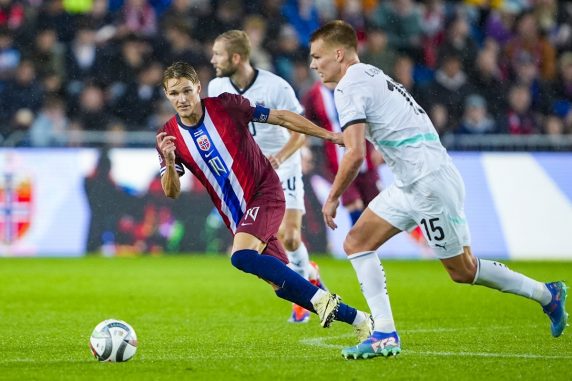 I know a lot of people purchase horses at auction. Joining the fray and the thrill of the chase by sticking my hand up is not something I’ve experienced, nevermind signing one of those exciting looking little books. Instead I chose to put my chips on the breeding table of chance and ‘grow my own’.
I know a lot of people purchase horses at auction. Joining the fray and the thrill of the chase by sticking my hand up is not something I’ve experienced, nevermind signing one of those exciting looking little books. Instead I chose to put my chips on the breeding table of chance and ‘grow my own’.
It’s been a girlhood dream to breed and raise a horse and I’m extraordinarily lucky to have been able to do it. It’s been an exceptional privilege and a special time that I will probably not get to repeat, but something I’m so grateful to have had the chance and lack of good sense to attempt. I’ve had a lot of fun, a lot of thrills a few spills and a lot of laughs along the way. And my goodness how much I’ve learnt!
Breeding 101
For anyone who’s not attempted it, breeding is a lot of fun when it all goes right. You get to spend ages pouring over stallion catalogues, chatting to stud farms, consulting vets and staring at your mare. Then there are swabs and scans and a trip to your chosen stud. Then more scans and nail biting while you stare myopically at grainy grey screens looking for grainy grey blobs, relief when u find one and then the worry that there might be another one lurking. And then a long wait while your mare’s belly swells and you fret and worry and lose sleep over the equine equivalent of ‘What to Expect When You’re Expecting’.
You know your projections and calculations will turn out wrong and despite the most diligent scrutiny of udders and back ends, your mare will follow her own schedule and only produce her treasure when she sees fit. Usually at the least expected and most inconvenient time possible.
And finally that little bundle is on the straw, everything is present and correct, everyone has come through it safely and you exhale and realise you’ve been holding your breath for 11 months.
Personalities
The size of the personalities always takes me by surprise. Those tiny bodies may come out flat packed, but the characters are always robust and fully inflated ! That disoriented newborn baby stage is gone as soon as they’ve found their feet and those large, liquid eyes stare back at you with the wisdom of the ages.
But as always with horses, there is little time to stand back and enjoy – there is work to be done! And so you feed and nurse and teach and watch them grow, testing and assessing as you go along. Some are bold and brave from the outset, others are shy and timid. All are enchanting.
My mares were kind and obviously wise souls and introduced me to the world of breeding with a succession of fillies. And my fillies have been lovely and kind and easy and I’ve enjoyed them tremendously, but I sighed each time I looked beyond the umbilical cord, only to be disappointed.
A colt, a colt, my kingdom for a colt
I’ve always wanted a colt. I don’t know why. To my romantic sensibilities, colts are just that bit bigger and quicker and more magical somehow.
And then, finally, the spelling farm rang with the long-awaited news – my boy had finally arrived and the mare had given this one everything. And didn’t she just. Her final masterpiece – a tiny replica of herself in a bright bay coat with a small star – just like his mom, but with balls! Right from day one this has been horse to the max. Mommy’s little boy in all senses of the word – having not been overly protective of previous foals, his dam would take your head off if you even looked at him funny. I must admit, I’ve never been too far behind !!
He is my dream come true. And doesn’t he just know it. There is an expression that you tell a gelding, ask a mare and discuss it with a stallion. There should be some sort of caveat for Little Lord Fauntleroys because from day one it has been clear where I stand !
Little boys need like-minded company. A sage friend, much more versed in the breeding business, advised that a group of 3 was the optimum number for keeping colts. Two just play each other into oblivion, but with a ‘spare’, one always gets a rest while the other two rough house. So we acquired a few friends and much in the fashion of busses, after waiting ages for my colt to arrive I ended up with three !
Stallions – A Raw Deal ?
I have always been fascinated with entires. There is a rather unkind idea that Thoroughbred entires are difficult and dangerous creatures who should be banished to distant paddocks with secure fencing and seemingly little contact with the outside world beyond the breeding season. So I found it interesting to see Arabian stallions on Commando rides behaving like perfect gentlemen in a group. A lot of European competition horses are kept entire and enjoy dual careers, fitting stud duties inbetween their competition schedule. And of course the epitome of working stallions are the Lipizzaners of the Spanish Riding School who all live and work quite equitably together.
Ian Vanderberghe is a teacher on the Intelligent Horsemanship courses I attended in the UK. He has a part THB coloured stallion called Antics, who he is proud to have produced as a perfectly sane, manageable part of life on the farm. So much so, that they often get marked down in show classes for the horse being too quiet ! Antics is a breeding stallion, but it is merely a small part of his job and general life on the farm.
Lucy Rees
I got to explore my interest a little further on a course with well known behavioural scientist Lucy Rees (author of The Horse’s Mind). Lucy is, admittedly, a little on the colourful side, but she’s been collecting empirical behavioural data and practicing ‘natural horsemanship’ methods for decades before its recent explosion onto the mainstream. When she’s not travelling the world to far flung places in search of feral horse herds, she runs a pet project in a remote part of Spain where she keeps and studies a herd of Pottoka ponies.
Spending a week lying in a grassy field under the Spanish sun is just the sort of research I enjoy and the insights were illuminating. Contrary to popular belief, the herd stallion was not the aggressive and violent, dominant male that people expect. Our study subject was infinitely quiet and gentle, tolerated near the mare band, but despite his tentatively friendly overtures, not often invited in and seemed to be regarded as a bit of a nuisance. His main social interaction came from the group of foals which he was incredibly patient and caring with. The little ones were very in awe of him and would follow him around like little shadows mimicking his every move.
Lucy is very experienced and respected for her work with remedial horses and stallions in particular and confirmed that what we were seeing was entirely normal behavior if stallions are left to grow, develop and socialize in a natural environment. She said that stallions are in fact more affectionate than mares, which is why they suffer so much and can develop such bizarre stereotypies when deprived of company. The other interesting idea to come out of my Spanish trip is that Lucy challenges the idea of a hierarchical social structure in horse herds. She maintains that under natural conditions, dominance hierarchies are so poorly developed as to be invisible, and actually need artificially created competition to develop. But that’s a subject for another column. All in all, it was a fascinating trip and I left Spain with a bit of sunburn and lot of food for thought.
Back to my colt
As a bit of fun, I tried to implement what I learned from Lucy and the good people at Intelligent Horsemanship and have tried, as far as possible, to raise my colts the same way. They grew up with good food, good company and plenty of sun on their coats and space to stretch their legs. There were a few ‘discussions’ along the way of course, and whether I got lucky, or whether the methods work, I don’t know, but all of them are (so far) relatively sane, sound individuals that even someone my size can handle.
Two of the gang are already in training and coping pleasingly with life. Two weeks ago my colt followed in their footsteps and became the last one to fly the nest. I tamed that beautiful wild mane, detangled his long black tail and brushed the field mud off him for the last time. He loaded and travelled equitably to his new home at the racing yards and settled in so well that the grooms could take him out for a hack that very afternoon. Bareback nogal, because this one’s so quiet ‘even the madam can ride it!’
Two weeks into his new life, he’s just started cantering and is showing every sign of thriving in the racing environment.
They say tiny acorns grow into mighty oaks. Well, it seems my sapling is well on his way !








